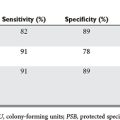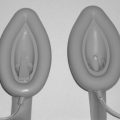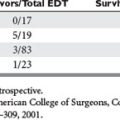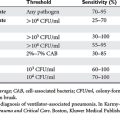CHAPTER 78 TRAUMA IN THE ELDERLY
The age at which a person becomes elderly has not been resolved by a clear consensus in the literature, but most agree that it falls in the span between ages 55 and 75. According to the 2000 census, 35 million (12.4%) Americans were over age 65, and by 2050, this age cohort is projected to reach 86 million (20.7%). The elderly constitute the most rapidly growing segment of the U.S. population. Today’s elderly enjoy a level of physical freedom unmatched by prior generations. Improved access to health care and assisted living communities allow many older Americans to function relatively independently well into their ninth decade. Traumatic injuries very often compromise this autonomy, creating dependence on relatives or caregivers for assistance with activities of daily living. Unfortunately, a number of physical factors predispose the elderly to injury, including diminished postural stability, motor strength, coordination, visual acuity, and hearing. These common changes often lead to an inability to recognize and avoid many environmental hazards, thus converting normal daily activities into treacherous and frequently lethal events. In direct correlation with this rapid expansion of this sector of the population, hospitals are treating increased numbers of geriatric trauma patients. In 2001, over 3.2 million elderly patients who sustained unintentional injuries were evaluated in U.S. emergency departments; 2.2 million (68.7%) were admitted. These patients have been shown to have more adverse outcomes, including case fatality rates and complications. In 2002, unintentional injury was the fifth leading cause of death in the United States overall and the ninth leading cause of death in those aged 65 and older, accounting for over 33,000 victims. Survivors exhibit a higher prevalence of functional impairment, often requiring longer hospital stays and complex discharge arrangements. Not surprisingly, the elderly, comprising just over one-tenth of the population, account for nearly one-third of health care resources expended on trauma.
PHYSIOLOGY
Anatomic changes evident in the elderly kidney include cortical mass loss secondary to glomerulosclerosis (acellular obliteration of glomerular capillary architecture) and tubular senescence. Hypertension, diabetes mellitus, and atherosclerosis accelerate these processes. Physiologically, these changes manifest as a reduced glomerular filtration rate (GFR). After the age of 40 years, the GFR decreases 1 ml/min/year. Tubular senescence blunts the reabsorption and secretion of solutes. Most significant is the decreased capacity to reabsorb sodium and to secrete potassium and hydrogen ions. The juxtaglomerular apparatus in elderly patients produces less renin and limits the response to aldosterone. The response to antidiuretic hormone is also attenuated. All of these changes mandate hypervigilant monitoring of fluid, electrolyte, and acid base balance in the injured elderly patient, especially those requiring surgery, during which massive fluid shifts are expected. Yet another factor leading to hypovolemia is a decreased thirst response, which often predisposes them to hypovolemia. Predicting decreased renal function in the acute setting can be difficult. A reduction in muscle mass with age often results in a normal serum creatinine despite a reduced creatinine clearance. Age-adjusted formulas for creatinine clearance are much better estimates of renal function in the elderly patient than serum creatinine levels. Potentially nephrotoxic agents, such as intravenous radiographic contrast, should be used with extreme caution even if serum creatinine levels appear within normal limits.
MECHANISM OF INJURY
Declines in peripheral vision, hearing, judgment, gait speed, and reaction time put older pedestrians at considerable risk for being struck by moving vehicles; they account for 18% of all pedestrian fatalities. The pedestrian struck death rate for this age group (3.17 per 100,000) is higher than for any other age group. Recent studies show that regarding injuries to a pedestrian struck, age plays a critical role in the anatomic distribution and severity of injuries. Older victims are significantly more likely to suffer severe injuries, especially to the head and chest. Severe abdominal trauma, spinal injuries, and fractures of the pelvis and tibia also increase significantly with age. One causative mediator of elderly pedestrian injury might be that the standard time allotted for most crosswalks in the United States assumes a walking speed of 4 feet per second, which is often unobtainable in this population. This correlates with the observation that one-third of all pedestrian fatalities in individuals over 65 years occurred within a crosswalk, double that of other pedestrians. Municipal identification of particularly dangerous intersections can result in crosswalk modification to provide better visibility, longer crossing times, and more appropriate danger notification to both drivers and pedestrians.
MANAGEMENT OF SPECIFIC ORGAN INJURIES
The nonoperative management of splenic injuries has become a well-established practice in hemodynamically stable patients. Splenectomy has been all but eliminated in the pediatric trauma population, and its incidence is quite low in young adults. However, this strategy remains controversial in patients older than 55 years. This reluctance dates back to early reports by Smith and Godley demonstrating high failure rates in this population. Anatomic explanations of this have indicated that older spleens have a weakened capsule and fragile vasculature secondary to a decrease in the amount of smooth muscle and elastin fibers. This prevents older spleens from adequately contracting and retracting damaged vessels within the injured parenchyma. More recent published results of nonoperative management of splenic injury in older patients have challenged age 55 and older as an exclusion criterion, with reported success rates up to 80%. Despite these published successes, a recent large, multicenter study sponsored by the Eastern Association for the Surgery of Trauma concluded that older patients fail this nonoperative approach more often than their younger counterparts, and those who do so suffer increased mortality and morbidity. Factors associated with an increased risk of failure of nonoperative management of splenic injury include higher grade injuries (grades IV and V), a contrast blush or pseudoaneurysm seen on computed tomography (CT) scans, combined liver and splenic injuries, and the need for multiple blood transfusions. Although the optimal management of geriatric blunt splenic injuries is still a matter of debate, the limited physical reserve of the elderly patient must be carefully considered when determining an individualized plan of care. Knowing that hypotension is poorly tolerated in this population has led many surgeons to consider splenectomy as the more conservative approach.
Aalami OO, Fang TD, Song HM, et al. Physiological features of aging persons. Arch Surg. 2003;138:1068-1076.
Bergeron E, Lavoie A, Clas D, et al. Elderly trauma patients, with rib fractures are at greater risk of death and pneumonia. J Trauma. 2003;54(3):478-485.
Bulger EM, Arneson MA, Mock CN, et al. Rib fractures in the elderly. J Trauma. 2000;48(6):1040-1047.
Grossman M, Scaff DW, Miller D, et al. Functional outcomes in octogenarian trauma. J Trauma. 2003;55(1):26-32.
Inaba K, Goecke M, Sharkey P, et al. Long-term outcomes after injury in the elderly. J Trauma. 2003;54(3):486-491.
Jacobs DG. Special considerations in geriatric injury. Curr Opin Crit Care. 2003;9:535-539.
DG Jacobs & BR Plaisier, et al Practice Management Guidelines for Geriatric Trauma. east.org, Eastern Association for the Surgery of Trauma, 2001
McGwin G, MacLennan PA, Fife JB, et al. Preexisting conditions and mortality in older trauma patients. J Trauma. 2004;56(6):1291-1296.
Perdue PW, Watts DD, Kaufmann CR, et al. Differences in mortality between elderly and younger adult trauma patients: geriatric status increases risk of delayed death. J Trauma. 1998;45(4):805-810.
Richmond TS, Kauder DR, et al. Characteristics and outcomes of serious traumatic injury in older adults. J Am Geriatr Soc. 2002;50:215-222.
Victorino GP, Chong TJ, Pal JD. Trauma in the elderly patient. Arch Surg. 2003;138:1093-1098.
Vyrostek SB, Annest JL, Ryan GW. Surveillance for fatal and non fatal injuries—United States, 2001. MMWR Morb Mort Wkly Rep. 53(SS07), 2004.







